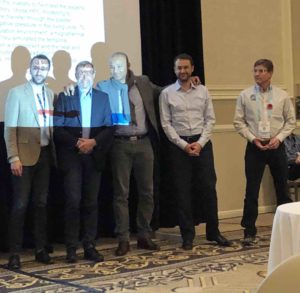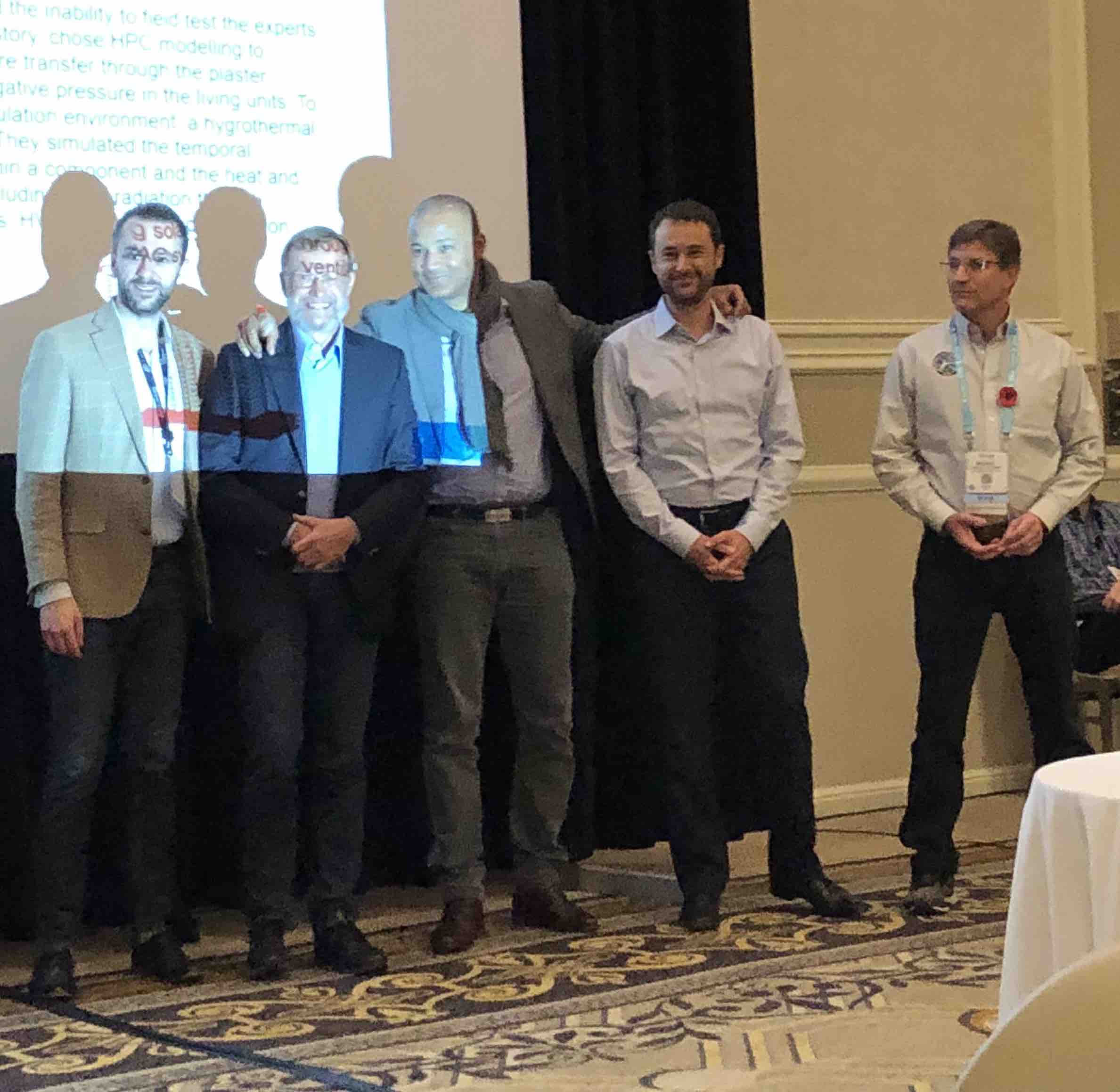
From left to right: Gisli Kr from Advania, Wolfgang Gentzsch from UberCloud, Jean-Luc Assor from HPE, and Burak Yenier from UberCloud
Today Hyperion Research announced that the winner of the 2018 Hyperion Award for Innovation Excellence goes to UberCloud and its project partners, the National Institute of Mental Health & Neuro Sciences NIMHANS in Bangalore, Dassault Systemes SIMULIA, Advania Data Centers, and Hewlett Packard Enterprise and Intel.
Our Living Brain Project team, led by researchers from the National Institute of Mental Health & Neuro Sciences NIMHANS in Bangalore and Dassault Systemes SIMULIA, is proud and humbled to be selected again this year by the Steering Committee of the HPC User Forum for the prestigious Innovation Excellence Award,” said Wolfgang Gentzsch from UberCloud, who managed this project. “And we are deeply grateful for all the support from Hewlett Packard Enterprise and Intel (the sponsors), Dassault SIMULIA (for Abaqus 2017), Advania Data Centers (providing HPC Cloud resources), and the UberCloud tech team for containerizing the Abaqus Workflow and integrating all software and hardware components into one seamless and fully automated HPE IaaS solution stack.”
This UberCloud Experiment #200 is based on computer simulations of non-invasive transcranial electro-stimulation of the human brain in schizophrenia, a serious mental illness characterized by illogical thoughts, bizarre behavior and speech, and delusions or hallucinations. This work represents a breakthrough in demonstrating the high value of computational modeling and simulation in improving the clinical application of non-invasive electro-stimulation of the human brain in schizophrenia and the potential to apply this technology to the treatment of other neuropsychiatric disorders such as depression and Parkinson’s disease. With the addition of HPC, clinicians can now precisely and non-invasively target regions of the brain without disrupting nearby healthy brain regions!
At the core of the project is Neuromodulation which refers to the modification of neural activity via an artificial stimulus such as an electrical current or a chemical agent. Traditionally, it involves highly risky and expensive invasive implantation of electrodes close to the nerves to be stimulated. It may also be performed non-invasively using methods such as electrical stimulation wherein external electrodes induce the required neural activity changes without the need for surgical implantation. This procedure is simple, affordable, and portable, and the subject is fully conscious and experiences minimal discomfort during the procedure.
After a 3D patient-specific head/brain model was developed, electrode placement was performed with Synopsys Simpleware ScanIP and CAD modules, and a high-resolution tetrahedral FE mesh (element size = 1mm3) was generated using the ScanIP and ScanFE modules. After specifying appropriate material properties and boundary conditions, 26 different electrical simulations were performed using SIMULIA Abaqus – each representing a different electrode configuration based on clinical guidance – on the Advania/UberCloud HPC cluster of HPE ProLiant servers XL230 Gen9 with 2x Intel Broadwell E5-2683 v4 and Intel OmniPath interconnect.

Figure 2: The above results are for two sets of electrical fields superimposed to produce temporal interference. Left: Electrical fields generated from electrodes placed on the left and right side of pre-temporal region of the scalp. Right: Electrical fields generated from electrodes placed on the left of the pre-temporal and rear region of the scalp.
Each job contained approximately 1.8M finite elements. On a system with 16 cores at SIMULIA, a single run took about 75 minutes, whereas on the UberCloud/Advania cluster a single run took about 28 minutes on 24 cores. Thus, we got a significant speedup already by running the simulations on UberCloud/Advania. However, the much bigger advantage now comes from performing these 26 different electrical simulations all in parallel, with an overall speedup of 26, thus reducing simulation time for the 26 simulations from the 33 hours down to 28 minutes, a speed-up factor of 70 just by using cloud resources. With this achievement, now, the patient just waits for the simulation results, the doctor identifies the best electrode configuration, and fine-tunes the patient’s remote control, all in an ambulant treatment, ready for the masses!




